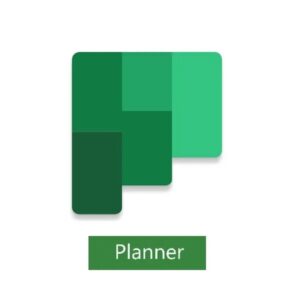
Microsoft 365 Teams: Collaborate Effectively!
Are you tired of juggling multiple platforms and struggling to keep your team on track? Look no further than Microsoft 365 Teams, the ultimate collaboration tool that brings together all the essential features you need for seamless teamwork. From chat to video conferencing, this powerhouse app revolutionizes the way teams collaborate. Discover the incredible benefits and game-changing features of Microsoft Teams that will take your productivity to new heights.
Table of contents
Key Takeaways:
- Microsoft 365 Teams is a powerful collaboration tool that combines essential features for seamless teamwork.
- Chat, video conferencing, and integrated Microsoft 365 tools make collaboration effortless and efficient.
- Discover the benefits and game-changing features of Microsoft Teams that will enhance your team’s productivity.
Getting Started with Microsoft 365 Teams
To get started with Microsoft 365 Teams, it’s important to develop collaboration skills and understand the capabilities of Microsoft . By utilizing Microsoft Teams, you can enhance teamwork, streamline communication, and boost productivity within your organization. Here’s a guide to help you navigate the platform and leverage its features effectively.
Share and Collaborate
One of the key features of Microsoft 365 Teams is the ability to share files, co-author documents, and collaborate with your team members. Within the platform, you can easily upload files, create new documents, and share them with your team. Collaborating on these files is seamless, allowing multiple team members to work on the same document simultaneously. This fosters real-time collaboration and saves time by eliminating the need for back-and-forth emails or file transfers.
Effective Communication
Microsoft 365 Teams provides various communication channels to facilitate seamless discussions and updates. The platform offers chat functionality where team members can exchange messages, share files, and even create private channels for confidential conversations. Additionally, you can conduct video meetings and conferences within Microsoft Teams, allowing face-to-face interaction even when team members are located remotely.
“Microsoft 365 Teams transformed our communication within the organization. We can now chat, share files, and conduct meetings all in one place. It has been a game-changer for our remote team!” – Sarah Johnson, CEO of ABC Company.
Access Resources and Training
Microsoft 365 Teams offers a wealth of resources and training materials to support your collaboration journey. Within the platform, you can access Microsoft 365 resources such as tutorials, tips, and best practices to enhance your understanding and usage of the tools. Microsoft also provides training courses and webinars to help you and your team members develop the necessary collaboration skills and maximize the benefits of Microsoft Teams.
By investing time in developing your collaboration skills and exploring the capabilities of Microsoft Teams, you can unlock the full potential of this powerful collaboration tool. Empower your team to work together efficiently, communicate seamlessly, and achieve collective success.
Next Steps
To kick-start your journey with Microsoft 365 Teams, familiarize yourself with the platform’s interface and navigation. Explore the different features available and experiment with file sharing, chat, and video conferencing. Take advantage of the wealth of Microsoft 365 resources and training materials to deepen your collaboration skills. With continuous learning and practice, you and your team will become proficient in utilizing Microsoft Teams for enhanced collaboration and productivity.
Creating Teams and Channels in Microsoft 365 Teams
In Microsoft 365 Teams, collaboration is made easy with the ability to create teams and channels. Teams allow you to bring people together based on common projects or departments, fostering a sense of cohesion and shared goals.
But what exactly are channels? Channels are subtopics or areas within a team where members can have conversations, hold meetings, and share files. They provide a focused space for specific discussions and collaboration, ensuring that team members can easily find the information they need without becoming overwhelmed by a flood of messages or files.
When you create a team in Microsoft Teams, it automates the creation of various components to support seamless collaboration. These components include:
- Microsoft 365 group: Every team has an associated Microsoft 365 group, which acts as the foundation for team membership, sharing resources, and managing permissions.
- SharePoint Online site and document library: Teams are backed by a SharePoint Online site and document library, providing a centralized location for file storage and collaboration.
- Exchange Online shared mailbox and calendar: Teams also create an Exchange Online shared mailbox and calendar, enabling team members to communicate and schedule meetings efficiently.
- OneNote notebook: A team in Microsoft 365 Teams includes a dedicated OneNote notebook, allowing team members to capture and share notes, brainstorm ideas, and collaborate on documents.
This integration with other Microsoft 365 apps like Planner and Power BI further enhances productivity and collaboration. For example, you can use Planner to create and manage tasks within a channel, making it easier for team members to stay organized and accountable. Power BI integration enables you to turn data gathered within Teams into meaningful insights and visualizations, empowering informed decision-making.
By leveraging these integrated components, Microsoft Teams provides a comprehensive platform for teams to collaborate effectively and streamline their work processes. With centralized file storage, seamless communication, and the ability to organize discussions and files within channels, Microsoft 365 Teams is a powerful tool for productivity and collaboration.
Components of a Microsoft 365 Team
| Component | Description |
|---|---|
| Microsoft 365 group | An associated group for team membership and resource sharing. |
| SharePoint Online site and document library | A centralized location for file storage and collaboration. |
| Exchange Online shared mailbox and calendar | Efficient communication and meeting scheduling. |
| OneNote notebook | Capture and share notes, brainstorm ideas, and collaborate on documents. |
By utilizing the power of Teams and its integrated components, teams can work together seamlessly, enhancing productivity and fostering collaboration.
Best Practices for Collaboration in Microsoft 365 Teams
To optimize collaboration in Microsoft 365 Teams, it’s important to follow best practices. By implementing these strategies, you can ensure privacy and security while enabling effective communication and collaboration among team members. Here are some key practices to consider:
Create Private Teams for Sensitive Information
When dealing with confidential or sensitive data, it’s crucial to create private teams within Microsoft 365 Teams. This allows you to restrict access and ensure that only authorized individuals can view and contribute to the information shared within the team. By safeguarding sensitive data, you can maintain the privacy and security of your organization and prevent unauthorized access.
Establish Organization-Wide Teams for Communication
To foster communication and collaboration across your entire organization, establish organization-wide teams in Microsoft 365 Teams. This enables employees from different departments and locations to connect, share ideas, and work together seamlessly. By setting up organization-wide teams, you can enhance internal communication and promote a sense of unity and collaboration throughout your organization.
Set Up Teams for Specific Projects
For more focused collaboration, create teams dedicated to specific projects or initiatives. By organizing teams based on projects, you can bring together the right individuals with the necessary skills and expertise. This streamlines communication and ensures that team members can efficiently collaborate on project-related tasks, share files, and track progress in one central location.
“By organizing teams based on projects, you can bring together the right individuals with the necessary skills and expertise.”
Create Teams for External Communication
In addition to internal collaboration, Microsoft 365 Teams can also facilitate external communication with clients, partners, or vendors. By setting up teams specifically for external stakeholders, you can securely engage in discussions, share updates, and collaborate on joint initiatives. It’s important to ensure that external teams are configured to maintain confidentiality and protect sensitive information.
By following these best practices, you can optimize collaboration within Microsoft Teams while prioritizing privacy and security. Remember to tailor these practices to your organization’s specific needs and goals. Whether you’re working on specific projects, engaging with external partners, or fostering organization-wide communication, Microsoft Teams provides a versatile and secure platform for effective collaboration.
Leveraging Microsoft 365 Tools for Collaboration
Microsoft 365 offers a comprehensive suite of collaboration tools that go beyond Microsoft Teams. These tools are designed to enhance productivity, streamline workflows, and foster seamless communication within teams. Let’s explore some of the key tools available:
Office for the Web
Office for the Web provides browser-based access to popular Microsoft tools such as Word, Excel, OneNote, and PowerPoint. With Office for the Web, team members can easily create, edit, and share documents, spreadsheets, presentations, and notes. The web-based interface allows for easy collaboration, as multiple users can work on the same document simultaneously.
OneDrive for Business
OneDrive for Business is a cloud storage solution that allows employees to store, access, and share files from anywhere. With OneDrive, teams can collaborate on documents in real-time, ensuring that everyone has the latest version. The ability to sync files across devices and platforms makes it convenient for team members to access their individual files whenever they need them.
SharePoint Online
SharePoint Online is a powerful platform for file storage, collaboration, and news broadcasting within teams. It provides a centralized location for team members to store and organize documents, share information, and work on projects together. With SharePoint Online, teams can create collaborative sites, set user permissions, and manage workflows, ensuring efficient collaboration and knowledge sharing.
Planner
Planner is a visual task management tool that enables teams to create, assign, and track tasks without the complexity of traditional project management tools. With Planner, teams can organize their work into boards, lists, and cards, making it easy to visualize tasks, deadlines, and progress. The intuitive interface and integration with Microsoft 365 tools make Planner a valuable asset for teams looking to stay organized and focused.
By leveraging these Microsoft tools, teams can unlock the full potential of collaboration, enabling seamless communication, efficient file sharing, and effective task management. Whether you’re working on a document, organizing a project, or sharing information, these tools provide the foundation for successful collaboration within your organization.
With Microsoft 365’s collaboration tools at your disposal, you can empower your team to work together, share ideas, and accomplish more than ever before. The integration, convenience, and versatility of these tools make collaboration a breeze, resulting in increased productivity and improved outcomes for your organization.
Conclusion
Microsoft 365 Teams is a game-changer when it comes to collaboration and productivity. With its seamless communication features and integration with other Microsoft tools, teams can work together more efficiently than ever before.
By leveraging Microsoft 365 Teams, teams can collaborate in real-time, share files, and communicate through chat and video conferencing. This leads to increased productivity and a more streamlined workflow.
Whether you’re a small business looking to improve collaboration or a large organization seeking to enhance teamwork, Microsoft Teams provides the tools you need. Say goodbye to scattered communication and hello to a platform that brings it all together.
Experience the power of Microsoft 365 Teams and unlock the full potential of collaboration in your organization. Start using Microsoft Teams today and discover the benefits of seamless communication and enhanced productivity.
FAQ
Microsoft 365 Teams is a powerful collaboration tool that allows teams to work together seamlessly, integrating features like chat, video conferencing, and integrated Microsoft 365 tools.
To get started with Microsoft 365 Teams, it’s important to develop collaboration skills and understand the capabilities of Microsoft 365. You can access Microsoft 365 training materials for support and begin exploring the platform’s features.
In Microsoft 365 Teams, you can create teams to bring people together based on common projects or departments. Each team includes channels where members can have conversations, hold meetings, and share files.
Microsoft 365 Teams integrates with other Microsoft 365 apps like Planner and Power BI, enhancing productivity and collaboration within teams.
Best practices include creating private teams for sensitive information, establishing organization-wide teams for communication, setting up teams for specific projects, and creating teams for external communication while maintaining confidentiality.
Office for the Web provides browser-based access to familiar tools like Word, Excel, OneNote, and PowerPoint. OneDrive for Business allows employees to store and access their files from anywhere. SharePoint Online facilitates file storage, collaboration, and broadcasting news within teams. Planner offers visual task management.
By leveraging its features and integrating with other Microsoft 365 tools, Microsoft 365 Teams enables seamless communication, effective collaboration, and streamlined workflows.
More:
- Microsoft 365 Project: Streamline Team Collaboration
- Optimize Tasks with Microsoft 365 To Do Tool
- Efficient Scheduling with Microsoft 365 Bookings
- Maximize Productivity with Microsoft 365 Insights
- Unlock Productivity with Microsoft 365 OneNote







Leave a Reply
You must be logged in to post a comment.